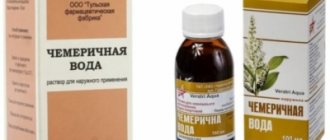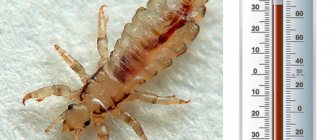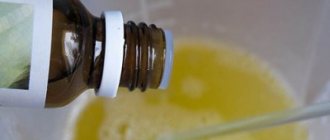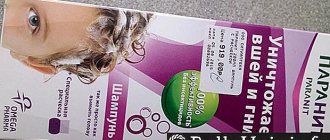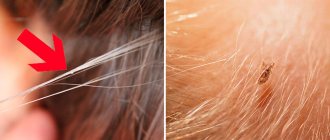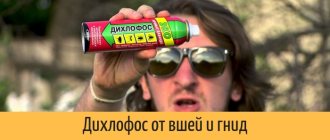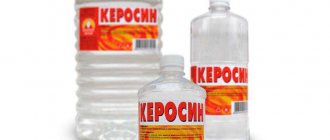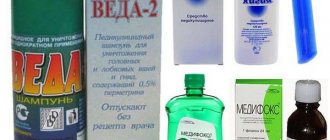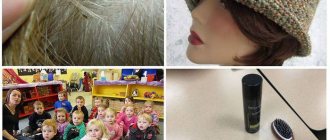Quick facts about lice:
- • Parasites cannot fly or jump; they crawl from head to head, clinging to hair using hooks located at the ends of their legs.
- • Adults lay about 5 eggs (nits), which they attach to the hair with a thick sticky substance.
- • Young lice (nymphs) hatch from the nits after 7-10 days.
- • Lice cannot survive without a host for more than 48 hours.
- • Itching with pediculosis only in 14-36% of cases
In recent years, pharmaceutical anti-pediculosis drugs have become less effective. This is because head lice have developed resistance (resistance) to the insecticides they contain. This is the main reason why many people look for unusual lice treatments, such as hair dye.
The procedure for getting rid of head lice
You can remove lice with hair dye by following the instructions:
- distribute the hair into strands, carefully process each of them;
- put on a plastic bag or a special cap;
- wrap a towel on top;
- leave to act for 30-45 minutes;
- wash off the paint with warm water;
- dilute 200 ml of the bite in 500 ml of water, rinse your hair.
The towel is necessary to create a high temperature on the head. In such conditions, peroxide acts faster, and insects have no chance of survival. Vinegar makes combing easier and helps separate nits from hair. Lightly dry your hair with a hairdryer and begin the combing procedure.
Do lice live on colored hair?
Many women are convinced that regular dyeing helps get rid of lice. But practice shows that parasites feel equally good on clean or dirty, curly or straight, natural or dyed hair.
The chemicals contained in certain types of hair dyes do have a negative effect on lice, but this requires direct exposure. If the infection occurs after dyeing, then the parasites will live and multiply in the same way as on natural hair. Lice feed on blood. The chemicals contained in paints do not penetrate into the human bloodstream, otherwise we would experience unpleasant side effects after painting. Thus, changing hair color has no effect on lice.
Traditional methods
- Tar soap - phenols and tannins cause antibacterial, antifungal, reparative, drying, antipruritic, anti-inflammatory, drying effects. These properties help cope with the consequences of lice bites - itching, redness, dermatosis. The disinfectant effect prevents the introduction of secondary infection through skin damage.
- Kerosene – paralyzes the respiratory centers of parasites. The vapors have a suffocating effect and penetrate the respiratory channels, blocking them. A sparingly soluble enzyme secreted by lice to hold nits (eggs) on the hair is broken down by exposure to flammable liquid.
- Vinegar – The acid in vinegar can kill nymphs that are not yet able to lay eggs. Treatment of head lice with vinegar in combination with thorough combing is an effective method.
- Oils - lice find the smell of oils repulsive, but this is not enough to get rid of them completely. Therefore, oils are effective as a preventative.
- Cranberry - can eat away eggs laid by lice. Nits are unable to withstand the level of acid contained in cranberries.
Does hair dye kill lice?
Many modern paints cannot be called effective against lice. They are made from plant extracts without the addition of toxic substances. To kill parasites, you must choose paint that contains powerful chemicals. They usually contain two components: ammonia or hydrogen peroxide. It was previously thought that both of these ingredients could kill lice. But that's not true. In recent years, parasites have become completely immune to hydrogen peroxide.
Ammonia paint has a certain anti-pediculosis activity. Ammonia is a caustic, alkaline substance that can kill lice with prolonged exposure. But ammonia is not effective against nits, which are protected by a dense shell. Therefore, if you decide to use hair dye against lice, you need
- 1. Be sure to buy paint that contains ammonia.
- 2. Leave the dye on your hair for at least 40 minutes.
- 3. After the coloring procedure, comb your hair thoroughly with a fine-tooth comb.
Since even ammonia paint is not effective against nits, the staining procedure will have to be repeated after 7-10 days.
Tar soap against lice and nits
Tar soap is an affordable product that can be found in any hardware store. This simple, cheap product has good cleansing properties and is used in the prevention of certain skin diseases. Also, tar soap has long been known as a remedy for pediculosis, that is, against the dominance of parasites in the hair.
The recipe for getting rid of it is very simple. If one of your family members is diagnosed with lice and nits, it is recommended to thoroughly wash your hair and soap it with tar soap. Do not wash off with soapy water. You need to wrap your hair in a bag or plastic wrap and leave it like that for 15-30 minutes. After the designated time has passed, the hair is thoroughly washed and then combed out with a fine-toothed comb. The procedure is repeated for three days in a row, and then repeated several times a week until the parasites are completely destroyed.
Some argue that tar soap or tar-based shampoo is an opportunity not only to cure head lice, but also to prevent its development. To do this, it is enough to wash your hair with this product once a week.
There is nothing complicated in using tar soap, but there are also pitfalls. Firstly, under the influence of the product it is not possible to kill lice, since the concentration of substances that can have a detrimental effect is too small to have an effect on solid chitin. Secondly, tar soap has no effect on nits. Thirdly, the product has the ability to greatly dry out the skin, which can cause irreparable damage to the hair, especially if it itself is prone to dryness and brittleness.
Hair dye: pros and cons (contraindications) of this method
Anti-lice hair dye has the only advantage - it is the ability to combine the dyeing procedure with anti-lice treatment. However, one should take into account the fact that the effectiveness of paint against parasites directly depends on the amount of ammonia it contains. And the more ammonia in the dye, the higher the risk of negative effects on the hair and scalp.
Dermatologists do not recommend using hair dye to treat head lice in children. During childhood, hair is much thinner and more vulnerable to damage from chemicals contained in coloring products. Children are also more prone to allergic reactions, the consequences of which can be very severe.
Additional disadvantages of this method of treating head lice include:
- • Repeated dyeing leads to weakening of hair
- • Hair dye does not kill nits
- • Hair dye is often more expensive than pharmacy anti-lice medications
- • Frequent dyeing significantly increases the risk of an allergic reaction.
In addition, coloring can complicate the process of getting rid of lice. Insects and nits become the same color as your hair, making them almost undetectable.
Can you get parasites when your hair is colored?
It is believed that a person with dyed hair is not susceptible to the development of head lice. For this reason, during an outbreak of the disease, some parents even decide to dye their child. This point of view is wrong. Lice don't care whether the owner's hair color is natural or not.
The insect feeds on blood. Naturally, the blood flow does not stop after staining. All chemicals in the coloring composition are removed the next day.
Dye can damage the hair structure, but not change the blood circulation process. The only advantage is the inability to attach a nit after staining for 2-3 days. After this period, the female will again be able to prepare new offspring.
Sometimes infection occurs around the same time as staining. In this case, the patient will start the disease, citing the fact that severe itching was mistaken for a reaction to the application of the coloring composition.
What safety methods should be used with this method of getting rid of lice?
Despite the fact that many of us consider the dyeing process a routine procedure, we should not forget about the safety rules:
- 1. Before the procedure, check the paint for an allergic reaction. To do this, apply a small amount of paint to the skin of your hand (elbow area or wrist) and leave for 12 hours. If during this time no signs of allergy appear - itching, swelling, redness - the paint can be used.
- 2. Carefully examine your scalp before the procedure. Do not use hair dye if there are wounds on the scalp that appeared after combing lice bites. When chemicals get into these wounds, they can cause burns or allergies.
- 3. Use disposable gloves to protect your hands
- 4. Be careful not to get the coloring agent in your eyes or mouth.
- 5. Avoid inhaling paint fumes. Carry out the procedure in a well-ventilated area.
As mentioned above, ammonia paints should not be used to treat lice in children.
How to dye your hair correctly to make lice disappear
When carrying out a procedure aimed at using paint against lice, you must follow a number of certain rules that will help you quickly get rid of parasites.
These include:
- To begin with, it is recommended to test for skin sensitivity. To do this, apply a small amount of the selected product to your wrist or elbow, and evaluate the result after about a day. If there is no redness, you can start painting.
- Ammonia paints, the use of which kills lice, have a strong odor and a high level of resistance. To prevent staining of the skin, gloves are required.
- You need to apply the paint using a brush, carefully processing each strand in stages. The thicker the product is applied, the higher the likelihood of eliminating head lice.
The duration of the procedure may vary depending on the characteristics of the chosen product. As a rule, you need to keep the dye on your hair for thirty to forty minutes.
However, if you experience any unpleasant sensations, such as burning or itching, you should immediately remove the hair product.
After completing the dyeing procedure, you must wash your hair thoroughly, always using shampoo. Additionally, it is recommended to use hair balm, which will help facilitate the process of combing out lice. It is recommended to comb your hair directly after washing; you should only use a rare special comb for this, which will help remove dead lice and nits.
Alternative Treatments
All methods of getting rid of lice can be divided into three main groups:
- • Mechanical removal. This method involves removing live parasites and nits manually. To do this, take a fine-toothed comb and comb your hair thoroughly. The advantage of this method is that it is absolutely safe. Disadvantage: you will have to spend a lot of time and effort to completely get rid of lice.
- • Home remedies. There are a huge number of lice recipes that can be used at home. These include: essential oils, kerosene, mayonnaise, olive oil, vinegar and many others. The main disadvantage of these methods is low efficiency. In most cases, treatment is delayed and ultimately the insects have to be removed mechanically. The advantages include financial savings - most ingredients can be found in every kitchen
- • Pharmacy drugs. Today you can find a wide range of pediculicides in pharmacies. These can be shampoos, emulsions and sprays. The undoubted advantage of using pharmaceutical products is that they are all pre-tested and are considered relatively safe. The downside is that lice have become resistant to insecticides, so many drugs are simply ineffective.
Correct head painting
Painting your head as a way to get rid of lice.
How to dye your hair correctly to remove parasites:
- wash and dry your hair without using balms, masks, sprays or other care products;
- divide into strands and comb thoroughly;
- mix all parts of the paint in a glass or ceramic bowl (do not violate the proportions specified in the instructions);
- apply dye to the entire length of the hair, and then to the roots;
- tie a bun, cover your head with polyethylene and a warm cloth, leave for 40 minutes;
- wash off the paint;
- rinse your hair with a vinegar solution (2 tablespoons per 1 glass of water);
- comb with a fine comb;
- apply shampoo and lather it thoroughly;
- Rinse off all products and dry your hair.
For better distribution of paint, you can use a hairdressing brush and comb.
How to get rid of lice without unnecessary problems?
The main problem in the treatment of head lice is that lice quickly adapt to toxic substances (insecticides) and stop responding to them. "Paranit" has a fundamentally new mechanism of action. They contain dimethicone and mineral oil.
Dimethicone is a silicone-based polymer that is found in many cosmetics. It helps moisturize the skin, creating a thin barrier. So why did this substance, safe and beneficial for humans, become destructive for parasites?
The answer lies in the life activity of lice. They have seven openings (spiracles) on each side of the body that merge into the trachea. The tracheae branch and form a thin network that supplies insects with oxygen. Through the same network they remove excess fluid after drinking blood. Due to the high surface tension of water, it does not penetrate the microscopic spiracles. And dimethicone copes with this task. It tightly clogs the respiratory system of lice, depriving them of oxygen and disrupting their water balance. This substance also affects nits in the same way - without the ability to breathe, they die.
Since dimethicone and mineral oil are non-toxic substances, Paranit anti-pediculosis products can be used to treat children from 3 years of age, and Paranit Sensitive lotion is suitable for children from 1 year of age and pregnant women. In addition, the processing can be repeated many times. Paranit products are available in various forms, and therefore are suitable for treating all family members. This is a simple and effective way to deal with an unpleasant problem without risk to health.
We use hellebore water for lice and nits
Hellebore water is a simple method of getting rid of head lice, accessible to many. This method was used by peasant families, and the recipe has survived to this day with virtually no changes. There is nothing complicated in the composition. Essentially, this is an alcoholic infusion of Lobel's hellebore. Lobel's hellebore was also used by peasant families to combat various pests in their gardens.
Hellebore water, once on the scalp, produces a neurotoxic effect on parasites. First of all, the smooth muscles of the intestinal parasites are affected, which leads to their inability to feed and reproduce. Paralysis also develops due to the effect on the nervous system.
Lice larvae - nits - have some resistance to negative external influences. Because of this, hellebore water cannot completely eliminate parasites. If one treatment for adult parasites was not enough, it is repeated after 24 hours. If a person becomes infected with parasites again, he will have to wait a week before he can use the alcohol tincture again.
Hellebore water is carefully applied to the strands after washing your hair. Then the wet hair is wrapped in a warm towel and left for 30 minutes. Afterwards, the hair is thoroughly combed, trying to remove all parasites.
Hellebore water is toxic if it enters the gastrointestinal tract or bloodstream; it should not be applied to damaged skin. Since the scalp is clearly damaged from lice bites and scratching, this product is contraindicated for use. Also, the product is not suitable for children under 12 years of age.
Using tea tree oil to get rid of parasites
Tea tree oil is an excellent antiseptic. It also has a pleasant smell that is absorbed into the hair and can remain on it for quite a long period of time. It is the smell of the oil that repels parasites, and the product itself leads to their death when lice and their larvae come into contact with the body.
Using tea tree oil is simple. 25-30 drops of the product are mixed with 30 ml of alcohol and 20 ml of water. The mixture must be shaken thoroughly. Afterwards, the hair is thoroughly treated with the product. To increase efficiency, you can comb your hair with a fine comb, which is pre-moistened in the mixture. Two hours after this combing, the head is thoroughly washed with shampoo, and then the combing procedure is repeated.
Despite the many benefits of tea tree essential oil in the fight against lice and nits, its effectiveness is still not very high. The remedy can be used as a prophylaxis to prevent the disease, but if pediculosis has already developed, it should be supplemented with some more serious measures.
Contraindications and precautions
Hair coloring has a number of contraindications, especially when it comes to using dyes with ammonia. You cannot treat head lice with hair dye:
- children under 16 years of age;
- pregnant and lactating women;
- people with allergies to the components of the coloring agent;
- people with sensitive skin;
- in the presence of open wounds, scratches, abrasions on the scalp.
When using paint to get rid of lice, you should take precautions, namely:
- strictly follow the dosage when preparing the coloring mixture;
- do not keep the composition on your head for longer than the permitted time;
- work with gloves to avoid staining the skin on your hands and nails;
- do not allow paint to get into your eyes or mouth;
- If a burning sensation or any other discomfort occurs, you must immediately stop the procedure and rinse the composition from your hair.
We must remember that experts do not recommend dyeing your hair with ammonia dyes more than once every 1.5 - 2 months.
Features of the impact of the coloring composition
Hair dye for head lice Hair dye for lice and nits is one of the alternative non-traditional methods of combating head lice. The basis of any coloring mixture is made up of two ingredients: an oxidizing agent and a dye. Moreover, the latter only contributes to a change in hair color, but it has no effect on lice. The same cannot be said about an oxidizing agent, which is a chemically active substance capable of entering into various reactions. It is enough to get it on the body of a bloodsucker for the process of destruction of its chitinous shell to begin.
- Such an aggressive component is hydrogen peroxide. Due to its high oxidative properties, it has a detrimental effect on the structure of the surface tissues of pests, destroying them, from which the pests are forced to die. Insects that managed to avoid such contact are poisoned by toxic fumes. Not only do their spiracle tissues burn out, but the skin piercing tool is also damaged. As a result, bloodsuckers die very quickly from hair dye, as they are no longer able to eat and breathe.
- The oxidizing agent reacts to nits in a completely different way. It will not be possible to remove egg capsules with paint, due to the fact that the coloring composition is not capable of destroying the highly durable shell. However, it does a good job of dissolving the sticky secretion that helps nits stick to human hair. Deprived of this sticky composition, the nit will be forced to fall off when combing out or will be easily washed off with running water while washing your hair.
- Lice are just as likely to die from paint that contains ammonia. The chemical activity of this component has a similar negative effect on lice. The same cannot be said about paints with a more gentle composition, created on the basis of synthetic oxidizing agents. They cannot influence parasites. Therefore, if you want to remove lice with hair dye with such a composition, you will not be able to achieve success.
Methods of disposal
The female lives 8 weeks and lays up to 300 nit eggs, which are not susceptible to poisons due to the protective cocoon. Relapses occur 5-10 days after the elimination of lice, so we always repeat treatment procedures.
| Chemical method - common | Mechanical - harmless | Combined - the most effective | |
| The essence of the method | Treatment of the entire hairline with anti-pediculosis drugs. | Removing lice and larvae with a special comb. | Alternate use of first a chemical method against lice, then a mechanical one (against nits). |
| pros | Many drugs will get rid of adult lice in just one use. | Allows you to remove larvae and sedentary insects from wet hair | By combining the chemical destruction of adult lice and the mechanical removal of their nits, we will immediately exterminate the entire population. We can even use mild toxic drugs that will preserve our hair. |
| Minuses | The larvae still survive in a strong cocoon, so several such procedures are necessary. Skin irritation, dandruff or allergies may occur. | We carry out several such procedures on long hair. | The most expensive method: we purchase both a comb and a chemical. |
Hair coloring
The opinion that you can get rid of lice and nits by dyeing is widespread among people. Does hair dye kill nits?
This is a truly effective remedy, however, there are nuances here: you will have to paint several times to completely destroy the insects.
It is also recommended to combine coloring with the use of medications or folk remedies.
Operating principle
So, how does paint affect parasites? The paint contains two components:
- coloring matter (pigment);
- oxidizer
The pigment does not have a significant effect on insects. Their destruction occurs due to an oxidizing agent, which is usually hydrogen peroxide.
Hydrogen peroxide is known for its ability to destroy molecules of organic substances, leading to their disintegration. When an oxidizing agent hits the chitinous cover of an insect, it immediately begins to corrode it, and toxic fumes enter the respiratory tract of the parasite.
So the insect dies immediately. And the lice that did not die after the action of the oxidizing agent try to leave the poisonous environment hostile to them and crawl away.
The oxidizing agent, which is aggressive in its chemical properties, also corrodes the dense protective covers of nits and the adhesive substance that attaches them to the hairs.
Coloring kills up to 85% of parasites.
Instructions for use
Today there is a huge variety of colors.
Permanent paints that do not contain hydrogen peroxide have become very popular.
Such paints should not be purchased in order to combat nits and seams.
In order not to worry whether hair dye will kill nits, you need to follow these instructions to combat parasites:
- Prepare for coloring. Put on an old T-shirt that you don't mind getting dirty, and take gloves. Mix the paint in a container (preferably a bowl), following the instructions on the package.
- Comb your hair thoroughly and spray it with water from a spray bottle (do not wet it completely - this will worsen the effect of hydrogen peroxide).
- Apply the thick cream along the hairline on the forehead, behind the ears, and at the back of the head so that paint does not accidentally get into these areas.
- Start painting. Divide your hair into strands and start coloring from the lowest ones, closest to the back of your head. Paint thoroughly from roots to ends. Move gradually towards the temples. Whiskey should be colored last, because... They are thin and quickly absorb pigment.
- Comb your hair again so that the dye is distributed evenly.
- Place a plastic bag or cap on your head. Leave the paint on your head for the time specified in the paint instructions. Typically this time is 20-30 minutes. During this time, the oxidizing agent will act on lice and nits.
- After the dyeing time has expired, remove the plastic bag and lightly spray your hair with a spray bottle, then massage your head. This will improve hair quality and increase blood flow to the hair follicles and scalp, which may be damaged by oxidizing agents. Also, using this action you will unstick dead nits.
- Rinse your hair thoroughly. An excellent option would be to use anti-pediculosis shampoo.
- Comb your hair with a comb or a special comb to get rid of dead lice and nits.
Advantages and disadvantages
Coloring as a remedy against pediculosis has undeniable advantages:
- Economical. The price for one pack of paint is less than the price for one pack of anti-lice medication.
- Effective in the fight against nits and lice.
- No harm. When used correctly, the paint causes minimal harm to health, because This is a proven remedy.
- Ease of use.
Like any drug, paint also has its disadvantages:
- Changing hair color. If you are not ready to change your hair color, then this method is not suitable for you.
- Allergic reaction. Before using paint, you need to do a test to see if it will cause an allergy.
- Weakening of the scalp. The pigment and oxidizing agent that make up the paint are chemically active substances and have an aggressive effect on the scalp and hair condition.
Despite the fact that paint is an effective remedy, its one-time use is not enough for the final removal of nits and lice.
It is necessary to re-dye it after a week or treat the hair with other means: medicines or folk remedies.
Advantages and disadvantages of the method
Using hair coloring to get rid of parasites has its pros and cons. The advantages include:
- safety (the paint is non-toxic and, when used correctly, does not harm health);
- ease of use;
- accessibility (stores offer a wide selection of paints to suit every taste and budget);
- quick result (the lice will die during the procedure);
- possibility of changing the image.
The disadvantages of the method are the following:
- the likelihood of an allergic reaction;
- side effect in the form of changes in hair color;
- damage to the structure and deterioration of hair quality due to exposure to aggressive components;
- the likelihood of itching or burning of the scalp during the painting process, dryness after it.
Another important point is that there is no guarantee that the lice will disappear after dyeing. Even if most of the adults die, nits will remain, from which young lice will soon emerge.
